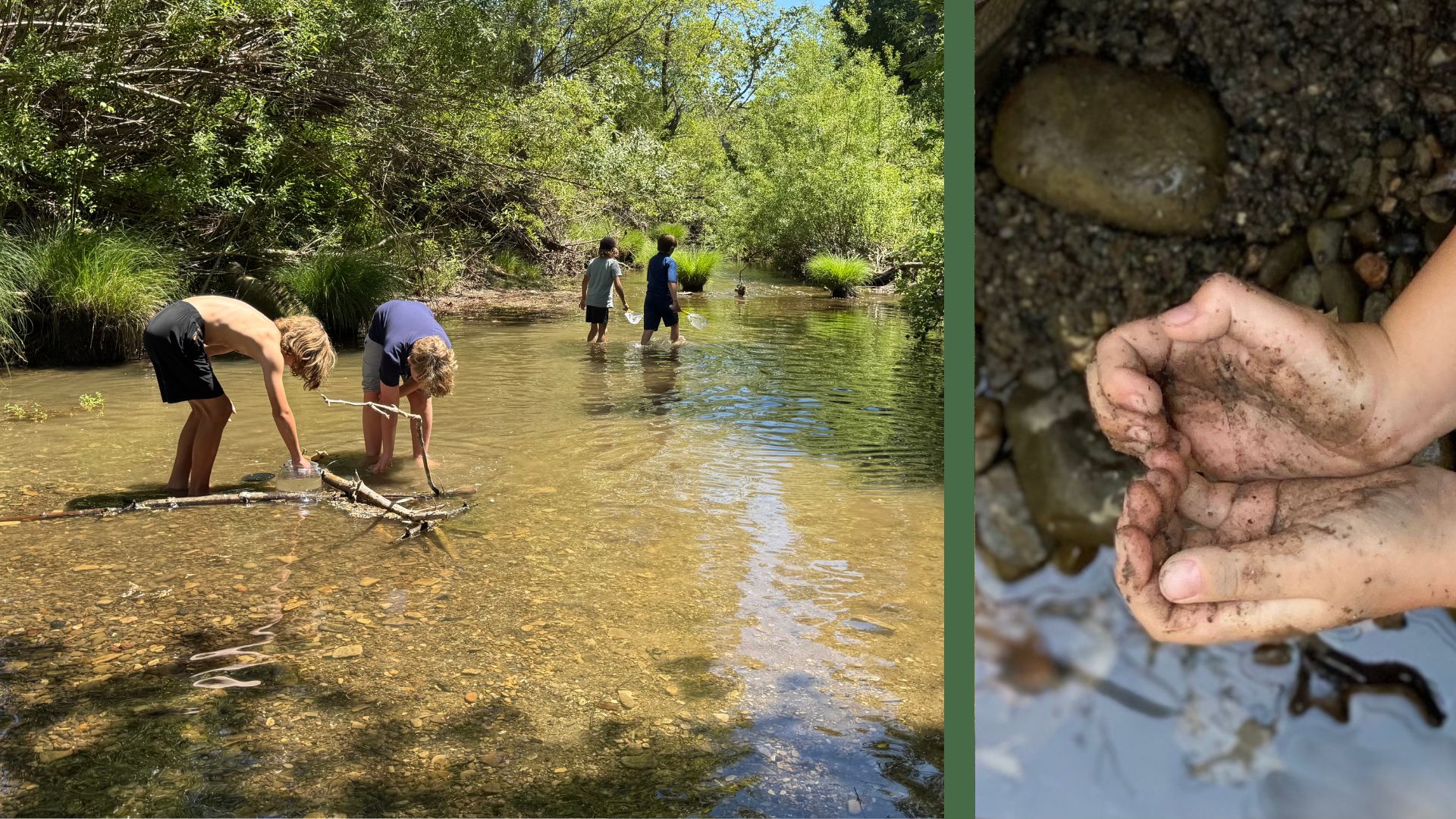How Nature Deepens Education at Santa Lucia School

At Santa Lucia School, the natural world isn’t just a backdrop—it’s a teacher.
Each week, students walk with their teachers down a short path that winds behind our campus, where a shaded creek runs through the oaks and willows. It’s here that science lessons, writing practice, math observations, and mindfulness all come alive—not in theory, but in experience.
A Weekly Rhythm Rooted in Nature
Creek days are a cherished rhythm at our school. Students from every class venture out to explore, observe, reflect, and simply be. They might sit on sun-warmed rocks, turn over leaves to discover insect life, or dip their toes into cool water. They carry their nature journals—tools that are as academic as they are personal—where they sketch what they see, record questions, describe textures and sounds, and track seasonal changes week after week.
This isn’t just outdoor playtime. It’s differentiated, thoughtful learning—anchored in curiosity and rooted in care.
Academic Learning in the Wild
Science becomes something students experience, not memorize. They learn about life cycles by watching tadpoles transform. They identify native plants and animal tracks, talk about erosion and watersheds, and observe how temperature, light, and rain affect their surroundings.
Writing is inspired by what they witness. A rustling hawk’s cry might become the opening line of a poem. A sketch of a dew-covered spider web turns into a descriptive paragraph. Students learn to write with detail and purpose because they are moved by what they see.
Math enters through measuring water flow, counting leaf types, comparing the heights of plants, and estimating distances traveled. Real-world math builds both skill and understanding, with applications that make sense in the moment.
And through it all, students ask their own questions: Why do these rocks feel warm and those feel cold? What kind of tree is this? Where do frogs go in winter? These questions don’t come from a textbook—they come from genuine wonder. And that wonder drives learning.
Nature as a Mirror: Mindfulness and Self-Awareness
Beyond academics, nature also offers something just as essential: a sense of peace.
In a world that often feels loud and fast, nature invites children to slow down, breathe, and pay attention. Sitting beside a creek, listening to the wind, watching shadows shift—these are mindfulness practices. We don’t always call them that, but they serve the same purpose: helping children become present, attuned to their senses, and grounded in their bodies.
This presence supports self-awareness. A child who feels frustrated can notice how their mood softens as they watch dragonflies skim the water. Another may come to understand their own comfort level with risk as they decide whether or not to climb a certain rock or wade into the current. Nature gives space for internal reflection, free from pressure or performance.
Building a Relationship of Respect
When children spend time in nature regularly—when they notice the return of the same bird each spring, or watch a tree lose its leaves—they begin to feel connected. And from connection comes respect.
We don’t teach environmental stewardship through fear or facts alone. We teach it through love. A child who knows a place, who has sat quietly in it, played in it, and journaled about it, will grow up wanting to protect it. That’s the heart of our approach: building a generation that doesn’t just know about the earth, but cares for it deeply.
As naturalist and educator Rachel Carson once wrote,
"If a child is to keep alive his inborn sense of wonder... he needs the companionship of at least one adult who can share it, rediscovering with him the joy, excitement, and mystery of the world we live in."
At Santa Lucia, we aim to be those companions—teachers, parents, and mentors walking beside children as they grow, grounded in a rhythm of wonder.
-Santa Lucia School
Teaching Peace for a Brighter World Since 1985